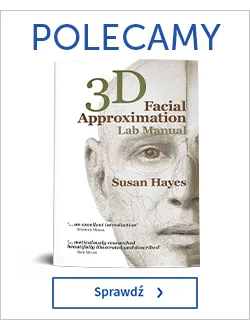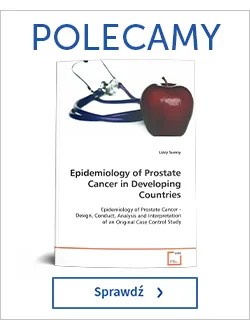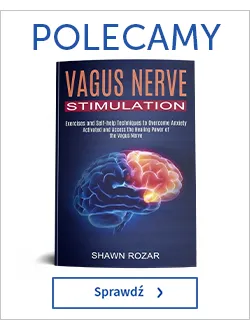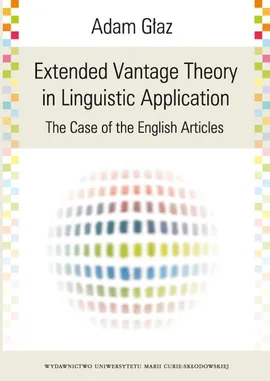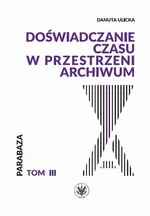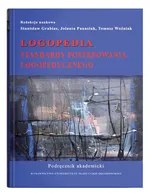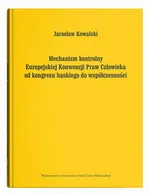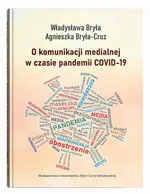- Kategorie:
- Język wydania: angielski
- ISBN: 978-83-7784-230-0
- Liczba stron: 295
-
Sposób dostarczenia produktu elektronicznegoProdukty elektroniczne takie jak Ebooki czy Audiobooki są udostępniane online po uprzednim opłaceniu (PayU, BLIK) na stronie Twoje konto > Biblioteka.Pliki można pobrać zazwyczaj w ciągu kilku-kilkunastu minut po uzyskaniu poprawnej autoryzacji płatności, choć w przypadku niektórych publikacji elektronicznych czas oczekiwania może być nieco dłuższy.Sprzedaż terytorialna towarów elektronicznych jest regulowana wyłącznie ograniczeniami terytorialnymi licencji konkretnych produktów.
-
Ważne informacje techniczne
-
Minimalne wymagania sprzętowe:
- procesor: architektura x86 1GHz lub odpowiedniki w pozostałych architekturach
- Pamięć operacyjna: 512MB
- Monitor i karta graficzna: zgodny ze standardem XGA, minimalna rozdzielczość 1024x768 16bit
- Dysk twardy: dowolny obsługujący system operacyjny z minimalnie 100MB wolnego miejsca
- Mysz lub inny manipulator + klawiatura
- Karta sieciowa/modem: umożliwiająca dostęp do sieci Internet z prędkością 512kb/s
-
Minimalne wymagania oprogramowania:
- System Operacyjny: System MS Windows 95 i wyżej, Linux z X.ORG, MacOS 9 lub wyżej, najnowsze systemy mobilne: Android, iPhone, SymbianOS, Windows Mobile
- Przeglądarka internetowa: Internet Explorer 7 lub wyżej, Opera 9 i wyżej, FireFox 2 i wyżej, Chrome 1.0 i wyżej, Safari 5
- Przeglądarka z obsługą ciasteczek i włączoną obsługą JavaScript
- Zalecany plugin Flash Player w wersji 10.0 lub wyżej.
-
Informacja o formatach plików:
- PDF - format polecany do czytania na laptopach oraz komputerach stacjonarnych.
- EPUB - format pliku, który umożliwia czytanie książek elektronicznych na urządzeniach z mniejszymi ekranami (np. e-czytnik lub smartfon), dając możliwość dopasowania tekstu do wielkości urządzenia i preferencji użytkownika.
- MOBI - format zapisu firmy Mobipocket, który można pobrać na dowolne urządzenie elektroniczne (np.e-czytnik Kindle) z zainstalowanym programem (np. MobiPocket Reader) pozwalającym czytać pliki MOBI.
- Audiobooki w formacie MP3 - format pliku, przeznaczony do odsłuchu nagrań audio.
-
Rodzaje zabezpieczeń plików:
- Watermark - (znak wodny) to zaszyfrowana informacja o użytkowniku, który zakupił produkt. Dzięki temu łatwo jest zidentyfikować użytkownika, który rozpowszechnił produkt w sposób niezgodny z prawem.
- Brak zabezpieczenia - część oferowanych w naszym sklepie plików nie posiada zabezpieczeń. Zazwyczaj tego typu pliki można pobierać ograniczoną ilość razy, określaną przez dostawcę publikacji elektronicznych. W przypadku zbyt dużej ilości pobrań plików na stronie WWW pojawia się stosowny komunikat.
Extended Vantage Theory In Linguistic Application. The Case of the English Articles
(eBook)-
Druk: Lublin, 2012
-
Wydanie/Copyright: wyd. 1
-
Autor: Adam Głaz
-
Wydawca: UMCS
-
Formaty:
PDF (Watermark)WatermarkZnak wodny czyli Watermark to zaszyfrowana informacja o użytkowniku, który zakupił produkt. Dzięki temu łatwo jest zidentyfikować użytkownika, który rozpowszechnił produkt w sposób niezgodny z prawem. Ten rodzaj zabezpieczenia jest zdecydowanie najbardziej przyjazny dla użytkownika, ponieważ aby otworzyć książkę zabezpieczoną Watermarkiem nie jest potrzebne konto Adobe ID oraz autoryzacja urządzenia.
Extended Vantage Theory In Linguistic Application. The Case of the English Articles
This study has a dual orientation and a dual aim: Theoretical and analytical. On the theoretical side, it presents a relatively little know cognitive model of categorization, Vantage Theory, surveys its linguistic applications and proposes its adaptation, called Extended Vantage Theory. In the analytical part, the adaptation serves a specific purpose: an account of the use of the English articles. The book is thus as much a testing ground for a theory as it is a hands-on struggle with specific data.
Acknowledgements 13 Introduction 15 Chapter 1. Vantage Theory: origin and basic tenets 19 1. Introductory comments 19 1.1 The Munsell set 20 1.2 Interviews 21 2. The theory 22 2.1 The space-time : categorization analogy 22 2.2 Vantages 24 2.3 An excursus: attention 28 2.4 Contraction and protraction of cognitive distance 30 2.5 Universal width of purview and the spotlight effect 33 2.6 Variants of the dominant-recessive pattern 36 2.7 Coextension 38 2.8 Individual cognition 41 2.9 Frames 42 2.10 Stress 43 2.11 Viewpoints 46 3. Vantage Theory in a broader context 48 4. Synopsis 54 Chapter 2. Vantage Theory: linguistic applications 57 1. Introductory comments 57 2. Category and concept. Colour and beyond 58 3. The applications 64 3.1 MacLaury (1995) on aspects of conceptualization 64 3.1.1 Quintessential vs. representative prototypes 64 3.1.2 Asymmetries in conceptualizing 65 3.1.3 Metaphorization: time 65 3.1.4 Metaphorization: birds and people in Kaluli 67 3.1.5 Double constructions 68 3.1.6 Viewpoints as coordinates: spatial orientation 69 3.1.7 Viewpoints as coordinates: contextualized and decontextualized thinking 71 3.2 Semantics of colour terms 72 3.2.1 The French marron and brun 72 3.2.2 The Hungarian piros and vörös 72 3.2.3 The Polish BLUE category 74 3.2.4 Colour terms in grammatical constructions 75 3.2.5 Japanese native and borrowed terms 75 3.2.6 Change in colour categorization 76 3.3 Lexical semantics 77 3.3.1 Bird naming 77 3.3.2 The Iberian Spanish “macho” 78 3.3.3 Autohyponymy 78 3.3.4 Dutch historical semantics 79 3.3.5 Vertical extent/position 80 3.3.6 Demonstratives 83 3.3.7 Lexis in written discourse 84 3.4 The social dimension 86 3.4.1 Styles in Japanese speech 86 3.4.2 Japanese masu forms 88 3.4.3 Ethnic identity 89 3.4.4 “Folk linguistics” and an individual’s national identity 90 3.5 Song lyrics 93 3.5.1 VT and a love song 93 3.5.2 The father-son relationship 94 3.5.3 Statistics in punk and hip-hop 94 3.6 Miscellanea 95 3.6.1 Japanese orthographic conventions 95 3.6.2 Language learning 95 3.6.3 From Old English to Middle English constructions 96 3.6.4 Number in English 97 4. Conclusion 99 Chapter 3. The English articles: a background survey 101 1. The definite article 101 1.1 Two classifications of the 102 1.1.1 Classification 1: Christopher Lyons 102 1.1.2 Classification 2: Low 104 1.2 Individual accounts of the 107 1.2.1 Russell 107 1.2.2 Christophersen 108 1.2.3 Searle 108 1.2.4 Allan 109 1.2.5 Heim 110 1.2.6 Löbner 110 1.2.7 Chafe 110 1.2.8 Givón 111 1.2.9 Fraurud 112 1.2.10 Hawkins and Christopher Lyons 112 1.2.11 Katz 116 1.2.12 Low 117 1.3 The in cognitive linguistics 118 1.3.1 Cognitive Grammar 119 1.3.2 Construction Grammar 121 1.3.3 Mental Spaces 122 1.3.4 Viewpoint (Epstein) 123 2. The indefinite article 134 2.1 Individual accounts of a/an 135 2.1.1 Russell and Ludlow & Neale 135 2.1.2 Hawkins 136 2.1.3 Leech 137 2.2 A/an in cognitive linguistics 138 2.2.1 Cognitive Grammar 139 2.2.2 Mental Spaces 141 3. The nil article 143 3.1 Individual accounts of the nil article 3.1.1 Jespersen 144 3.1.2 Hewson 144 3.1.3 Chesterman 145 3.1.4 Berezowski 145 3.2 The nil article in cognitive linguistics 146 4. Final comments 148 Chapter 4. (E)VT and the English articles 149 1. (E)VT and articles: framework development 149 1.1 Case 1: the/a house in Doris Lessing 149 1.2 Case 2: the in Ernest Hemingway 152 1.3 Case 3: articles and capitalization 154 1.4 Case 4: articles and translation 159 2. EVT: the current framework 161 3. EVT and articles: a first classification 168 3.1. Similarity predominating 168 3.1.1 Non-discrimination: SS, SS+, SS- 168 3.1.2 The dominant vantage with variations 170 3.1.2a The default dominant vantage: SS D 170 3.1.2b The other balanced variants: SS+ D-, SS- D+ 172 3.1.2c The non-balanced variant: SS- D 173 3.1.2d SS- D vs. SS- D+ 174 3.1.2e SS vs. SS D 177 3.1.3 Synopsis of similarity predominating 178 3.2 Difference predominating 179 3.2.1 The default recessive vantage: DD S 179 3.2.2 The balanced DD+ S- variant 180 3.2.3 The balanced DD- S+ variant 181 3.2.4 Logical definites 183 3.2.5 Synopsis of difference predominating 184 3.3 Definite plurals: [SS-] D and [SS] D 186 3.4 Pluralized mass nouns 189 3.5 A few comparisons 189 3.5.1 Predominating similarity vs. predominating difference 189 3.5.2 Nil vs. definite articles 192 3.5.3 Non-default balanced recessive vantages: DD+ S- vs. DD- S+ 193 4. Synopsis 197 Chapter 5. EVT and articles in discourse 201 1. Introductory comments 201 2. Coreferentiality 202 3. Reference-point phenomenon 206 3.1 Sentence/phrase level 206 3.2 Discourse level 208 3.3 Created associative links 211 3.4 Scripts 213 4. The role of encyclopedic knowledge 216 5. Discourse-initial the 218 6. Hearer’s unfulfilled expectations 221 6.1 Definite vs. indefinite article 221 6.2 Nil vs. indefinite article 224 7. Lexical vs. discourse level 225 8. Conclusions 226 Chapter 6. EVT and articles: a further extension 227 1. Introductory comments 227 2. Conceptual units larger than words 227 3. Conceptual replication 232 3.1 Replication through the indefinite article 233 3.2 Replication through the definite article 236 4. Special cases: novel conceptualizations and formulae 238 4.1 Unique but not the only one 238 4.2 Nationality nouns 239 4.3 Collective nouns 241 4.4 (The) sandflats 245 4.5 Oak 247 4.6 Only one Himalaya(s) 247 4.7 A British Isles; a United Nations 248 4.8 Viewing modes in analogies and blends 250 4.9 A temporal-plus-cognitive viewpoint 253 4.10 The–nil contrast neutralized 254 5. Final word 254 Conclusion 257 References 261 Index of names 281 Thematic index 287
-
Inne autora
-
Inne z kategorii
-
Inne wydawcy
Inni Klienci oglądali również
Impact of economic crisis on the functioning of political systems. A case study of Greece, Spain, and Italy
Prezentowana publikacja zawiera wyniki badań prowadzonych przez trzy lata przez Tomasza Kubina, Małgorzatę Lorencką i Małgorzatę Myśliwiec w ramach projektu sfinansowanego ze środków Narodowego Centrum Nauki (przyznanych na podstawie decyzji nu...
Developing into an effective Polish Teacher of English
The major aim of this work has been to explore the profile of an effective Polish teacher of English ten years ago and now. In particular, it has attempted to determine what competencies or kinds of professional knowledge distinguish this successful pr...
Trends Reshaping International Business Theory and Policy
In this research, the Author focuses on the analysis trends reshaping international business theory and policy. According to the foreign trade policy theory, further trade liberalisation and improved framework policies would increase trade and promote ...
Legal English. Civil, Commercial, Administrative and Labour Law
Podręcznik będzie stanowić idealne narzędzie do doskonalenia praktycznej znajomości języka angielskiego prawniczego, w szczególności w obszarach prawa cywilnego, handlowego, administracyjnego i pracy. Zakresem tematycznym obejmuje także wprowad...
The Stretelli Case and Other Mystery Stories
This early work by Edgar Wallace was originally published in 1930. „The Stretelli Case and Other Mystery Stories” is a collection of short stories, some also published in other collections of Wallace’s works. This volume includes: &bd...
Financial market instruments in case studies. Chapter 2. Mortgage Financial Instruments in European Countries – Anna Szelągowska
Rynek finansowy jest trzonem gospodarki i wywiera ogromny wpływ na jej poszczególne branże, pozwalając jej dzięki temu właściwie funkcjonować. Odbywa się to dzięki różnorodnym instrumentom finansowym, które tworzone są specjalnie p...
Recenzje
Nikt nie dodał jeszcze recenzji. Bądź pierwszy!
Zgłoś nadużycie



